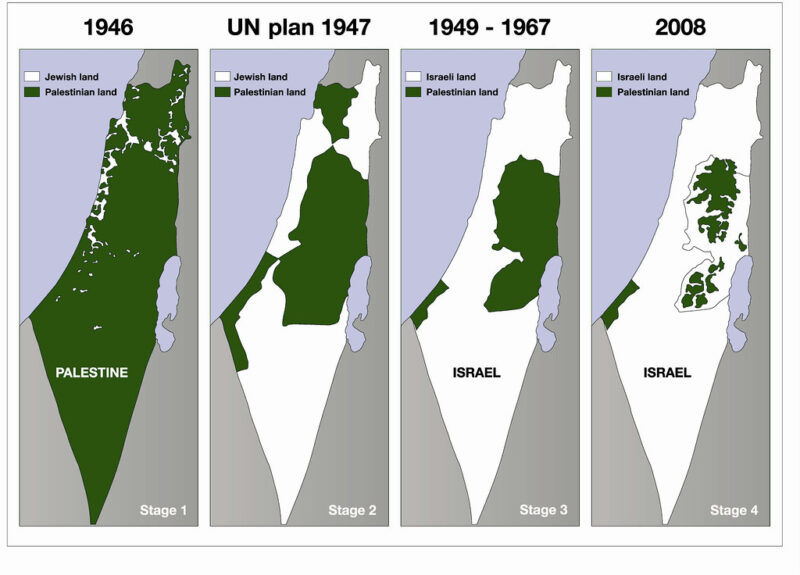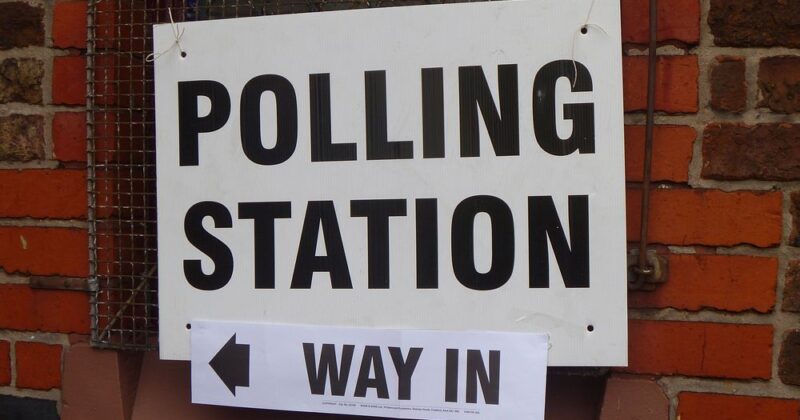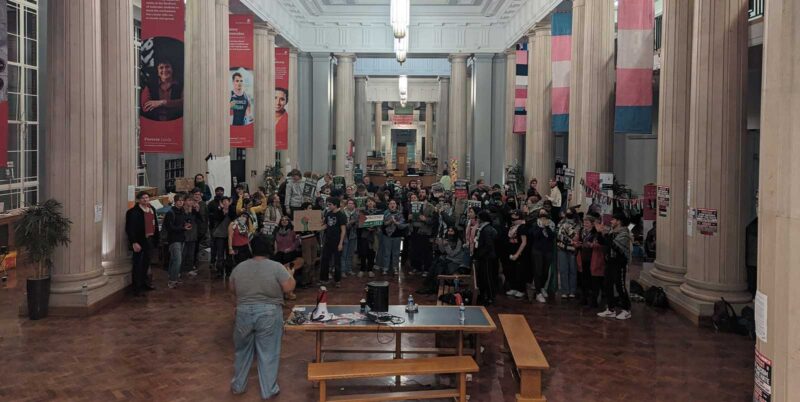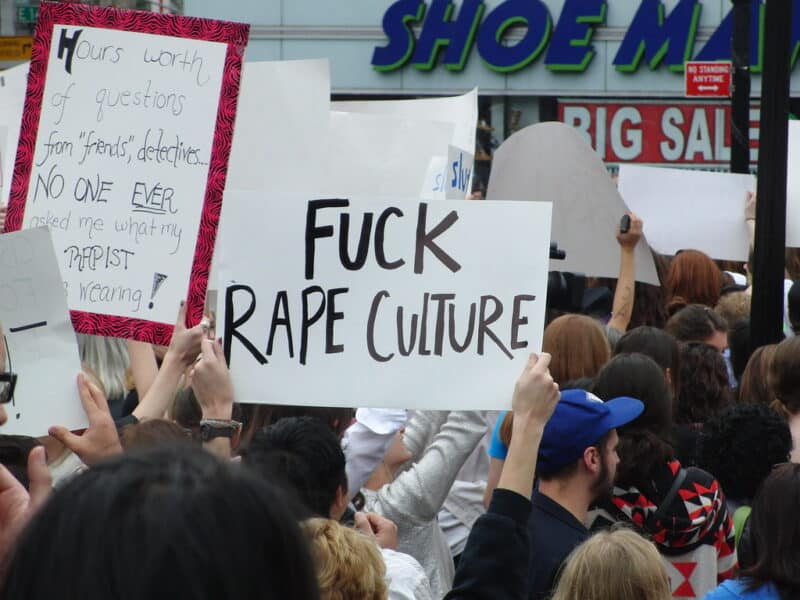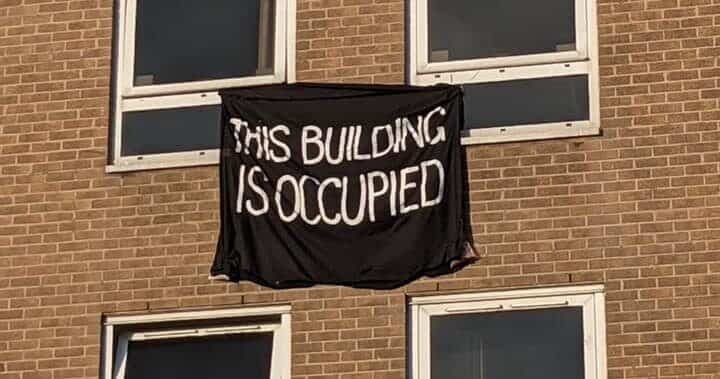General strike: Chilean workers and students unite
 Massive student protests and strikes have rocked Chile as people fight back against education cuts by the unpopular right wing government, write Jeremy Dewar and Dave Stockton
Massive student protests and strikes have rocked Chile as people fight back against education cuts by the unpopular right wing government, write Jeremy Dewar and Dave Stockton
IN CHILE some 82 trade unions, student organisations and civil society bodies combined to mobilise for the two-day general strike or national stoppage. Called by the Workers United Central (CUT), the Chilean TUC, the general strike was also supported by the social-democratic Concert of Parties for Democracy (CPD) and the Communist Party of Chile.
Central to the strike was the 780,000-strong Confederacion General de Trabajadores (CGT). The strike was basically in support of a three-month student movement for radical education reform. Demands include the elimination of a voucher system, which supports private universities, and for free, universal high quality education at state schools and universities. The strikers also called for improved working conditions for hospital and emergency services workers.
There were clashes early on the first day of the strike between protesters and police in the poor neighbourhoods on the outskirts of Santiago, while overnight thousands filled the streets banging pots in support of the protest – a cacerolazo. Protesters barricaded roads with burning tyres in parts of the capital Santiago. In several other cities demonstrators clashed with riot police using water cannons and tear gas.
Young people and trade unionists alike detest Chile’s President Sebastián Piñera, a right-wing billionaire. He has contemptuously replied to the students’ central demand of free education: “We all want education, healthcare and many more things for free, but I want to remind them that nothing is free in this life. Someone has to pay.” Paying is easier, of course, if you have billions in the bank – but not so easy if you live in a workers’ district or a shantytown.
Students take to the streets
The mobilisation of young people began in early June and reached massive proportions on 9 August when up to 150,000 high school and university students and teachers marched through the streets of Santiago. Tens of thousands demonstrated in Concepción, Valparaiso and other cities. But the police violently broke up the demonstrations with batons, teargas and water cannon. Hundreds were arrested and badly treated.
It is a mark of the students’ courage and determination that repression has been unable to break this movement; on the contrary, it that has gripped the country’s imagination. The sight of plumes of teargas, hundreds of riot police charging young school students, and snatch squads dragging them off of buses and beating them enraged wide layers of the working class, the poor and lower middle classes. It lead to the CUT call of a 48-hour strike – the first of this length since dictator Augusto Pinochet left power in 1990.
The movement is now bring referred to as the “Chilean Winter” and is openly inspired by the Arab Spring. Its main slogan is “Free and Equal Education”, but it also touches on a whole series of grievances dating back to Pinochet and the neoliberal ‘experiment’ of the 1970s.
One of the dictator’s last decrees was to break up the national education system, handing over state schools to the municipalities. There would no longer be national standards and funding levels. The local authorities in socially deprived areas were given no extra funding, so a big gulf opened up between schools in rich areas and those in poor districts, while the ruling elite sent their children to expensive private schools and often abroad.
The central demands of the high school students is the abolishment of the old dictator’s poisonous legacy and the restoration of a truly national free education system. Added to this are the problems university students face: crippling personal debt, due to high interest rates on student loans, and profiteering by the largely privatised universities.
Both teachers and students are demanding that state spending on education be brought up to UNESCO’s recommended level of 7 per cent of GDP (Chile’s economy is enjoying 6 per cent growth at the moment, although living standards and public services do not reflect this).
The movement sustained its momentum through widespread occupations of schools and a boycott of classes and lectures. They have adopted the tactics used in the previous school student movement in 2006 – the so-called levantamiento de los pinguinos (the uprising of the penguins), named after their black and white school uniforms. Young people have occupied dozens of schools over the past two months, while hundreds more have been closed by the school strike. Over 40 high school students have gone on hunger strike inside the occupied schools; three of them lasting for 37 days.
Faced with the power of the movement, Piñera has vacillated between offers of reform and a resort to harsh repression, a sign of his weakness. It is also a good sign that the movement has mobilised young people from the poorest parts of the working class. The movement is broadening out into a general rebellion against the neoliberal orthodoxy that has ruled the country for the past 38 years.
For an all-out General Strike
The success of the two-day general strike in August points to the possibility of escalating the movement yet further into a head on confrontation with Piñera – an all-out general strike. Its demands must be for a free national education system from primary to university level under the control of councils of pupils and students, parents, teachers and education workers.
The private schools and universities must be nationalised and opened up to the children of the working class and the poor. The entire cultural, economic and political heritage of the neoliberal dictatorship needs to be ripped up.
But the movement should demand the repeal of all Pinochet’s repressive and neoliberal laws. The Pinochet era constitution, which concentrates power in the presidency, should be scrapped and elections held to a sovereign constituent assembly. The movement should not be demobilised. A constituent assembly should be a focus for all demands of the masses.
These demands should not stop at just education but call for a free at the point-of-delivery welfare state, for nationalisation of privatised public services, wider union and workplace rights, and the expropriation of billionaires Piñera. To ensure revolutionary measures are debated and adopted, representatives should be recallable by their electors if they do not respect their democratically decided mandates.
A successful general strike itself inevitably poses the question of who should rule Chile. A constituent assembly, likewise, can be a forum where the question of what sort of social system should replace neoliberal capitalism is posed. The answer is: not a government of billionaires like Piñera, but a government of the workers of town and countryside, of the poor, and of the youth – a government whose aim is socialism.

